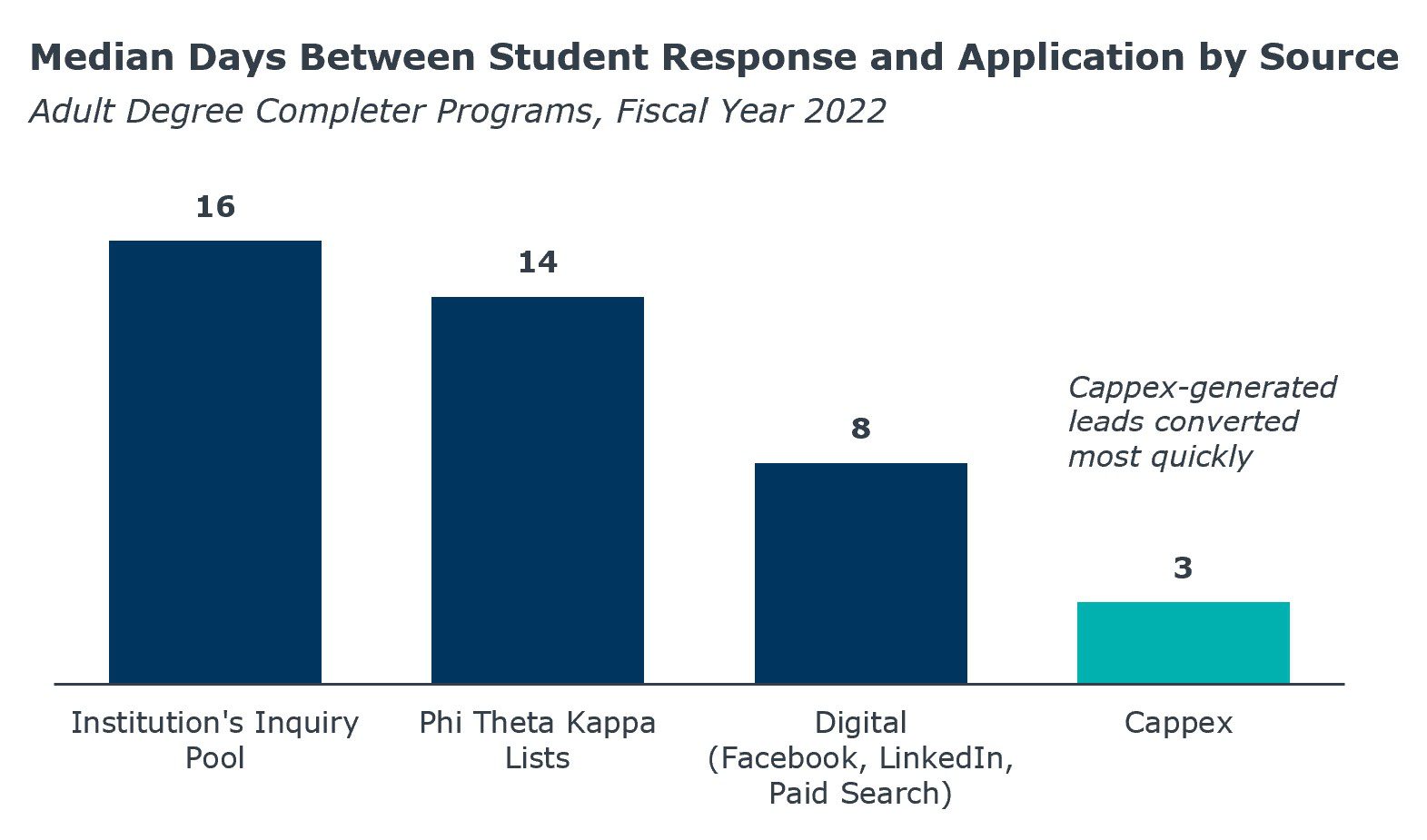How to recruit specialized business students and grow non-MBA enrollment
Finding and attracting career switchers
December 20, 2022, By Beth Donaldson, Managing Director, Consulting Services
In my experience managing graduate business enrollment, the pool of students applying to business programs is always changing. And that’s especially true today: according to GMAC, there have been an increasing number of applications to specialized business master’s programs, while applications to MBA programs have been declining.
Unfortunately, finding and recruiting this audience of non-MBA graduate business students is not easy — there’s no college fair that you can attend to find them, and they don’t fit into a single persona. Many institutions start with recruiting their own undergraduate students into their graduate programs, but undergrads who didn’t major in business start to consider business school later in life than those who did.
So how do you find this elusive audience? The following is a guide to help you locate, recruit, and nurture this new and important addition to your business program audience.
Explore Our Research on Adult Learner Motivations and Behaviors
TIP 1: Be intentional about limiting barriers for potential applicants
While many business schools became test-optional when COVID-19 lockdowns limited access to testing facilities, test-optional is likely here to stay. To many students, testing now feels like an unnecessary hurdle on the path to graduate school. If your institution does decide to re-implement testing requirements, it’s important to consider how that will deter a subset of your potential student pool.
-
5+
Bachelor’s degree students who didn’t major in business tend to wait 5+ years before deciding to pursue a business master’s degree.
Additionally, offering a variety of course modalities is crucial in ensuring your program is suitable for career switchers. Students who are pursuing a master’s degree to switch careers to a business field are more likely to be five or more years removed from graduating with their bachelor’s, according to the 2022 GMAC Potential Students Survey. This makes them even more likely than the average graduate student to be juggling a full-time job, marriage, and parenthood along with their education. Providing a variety of options for them to achieve their educational goals will make them feel more comfortable applying to your program.
Furthermore, if your institution was one that adopted additional course modalities in early 2020, time may have passed since you’ve done an assessment of your remote and hybrid offerings. I recommend evaluating the quality of instructional delivery you’re currently offering and making adjustments as needed before marketing them to career-switching applicants.
TIP 2: Clearly establish and communicate your “return on education”
I always use the term “return on education” rather than “return on investment” because it implies more than just monetary stakes. Students are also thinking about the time they’re spending in your program and the experience they’re getting out of it. Career switchers are jumping into a field that is likely brand new for them, and unless they’re attending full-time, they’re trusting your institution to provide flexibility to accommodate their current job, in addition to career counseling for the one they hope to transition into.
This is where your commitment to your institution’s value proposition comes in. What are you doing to provide for the needs of your student body, and how can you bring those things to the forefront of your marketing and recruitment strategies? Do you offer internship or fellowship opportunities? Do you participate in corporate partnerships? Is your institution in a prime location for a specific field or industry? Communicating these benefits clearly in your marketing states to potential applicants that you can support them as they make their career transition. Articulating return on education is important for any program, but especially so when students are making a career pivot and trusting you to facilitate the transition.
Learn How to Test Your Marketing Messaging Effectively
TIP 3: Leverage a diverse lead generation strategy to find candidates you might otherwise miss
Because fewer graduate applicants are taking admissions tests, you can’t rely solely on test-taker name lists for your leads. They are still important and useful, but it’s best to diversify your lead generation strategy.
Establishing corporate partnerships can provide you with access to a group of adults who may be looking for an educational opportunity to advance. In addition to business industry partners, consider what connections you may be able to forge outside the field as well. For instance, there are many teachers currently changing careers. Maybe creating a partnership with your local school district would be beneficial for your program. This is just one example—don’t be afraid to think outside the box when thinking of organizations to connect with.
Digital marketing is another way to find these students, but it is important to be deliberate and discerning about what digital platforms you invest in. Incorporating high-intent sources, such as Cappex for Adult Learners and paid search, can help diversify your lead strategy cost-effectively. These sources are helpful since they connect you with students who have a strong interest in your program, meaning they’re more likely to convert. And in the case of Cappex for Adult Learners, EAB invests in the large marketing campaigns and deep expertise needed to find these students at scale, which can make lead generation more cost-effective for your institution.

Maintain a Diverse Lead Generation Strategy Within Your Marketing Budget
The audience interested in non-MBA graduate programs is dynamic and ever-changing, and I look forward to learning and sharing more insights about this audience across the coming months. If you commit to the tips above –limiting application barriers, communicating your return on education, and seeking out career switchers in unexpected places—it can put your institution on the path to a successful recruitment strategy.

More Blogs

Your digital marketing strategy is probably outdated—here’s how to fix it

How graduate enrollment leaders—and prospective students—are using AI
